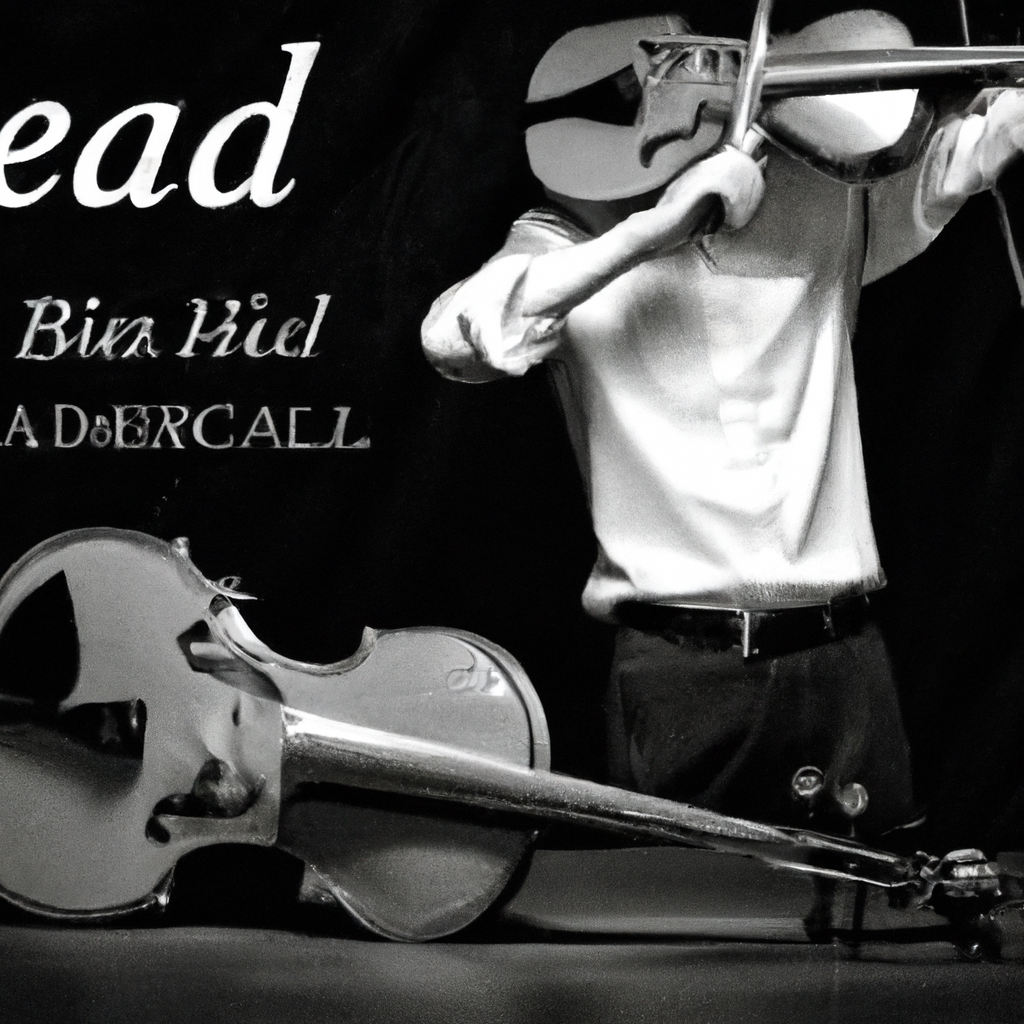
The violin is a beautiful and versatile instrument that has captured the hearts of music enthusiasts for centuries. Its melodic tones and expressive capabilities make it one of the most popular instruments to learn and master. However, like any musical instrument, learning the violin requires dedication, patience, and a deep understanding of the dos and don'ts. In this article, we will explore the essential guidelines and best practices for successful violin learning.

One of the most crucial steps when learning the violin is finding a reputable teacher or instructor. A qualified teacher will guide you through the learning process, provide valuable feedback, and help you develop proper technique and form. They will also tailor their teaching methods to meet your individual needs, ensuring that you progress at a comfortable pace.

Proper posture and positioning are essential for playing the violin. Start by standing or sitting up straight, with your shoulders relaxed. Hold the violin with your left hand, keeping your wrist straight. Position your right hand on the bow, ensuring a relaxed grip. Correct posture and positioning will not only prevent injuries but also enable you to produce a better tone.

Consistency is key when learning the violin. Start by practicing for shorter periods, gradually increasing the duration as you build stamina and strength. Avoid overexertion and listen to your body. It's better to have shorter, focused practice sessions than long, exhausting ones.

Having a consistent practice routine will help you stay organized and make progress more effectively. Set aside dedicated time each day for practice, even if it's just 15 minutes. Consistency will build discipline and make practicing the violin a habit.
Technique and fundamentals are the building blocks of violin playing. Spend time on exercises and scales to develop finger strength, dexterity, and intonation. Mastering the basics will lay a solid foundation for more advanced techniques and repertoire.
Playing the violin can be physically demanding. Don't push yourself too hard and remember to take breaks when needed. Resting allows your muscles to recover and prevents overuse injuries. Listen to your body and stop practicing if you feel pain or discomfort.
Attending concerts and performances by professional violinists can be a great source of inspiration and motivation. Observing their technique, musicality, and stage presence will broaden your musical horizons and fuel your passion for learning the violin.
Joining a violin community or ensemble can provide a sense of camaraderie and support. Interacting with fellow violinists, sharing experiences, and playing together will not only enhance your skills but also keep you motivated and engaged in your violin journey.
Learning the violin is a gradual process that requires patience and persistence. Avoid rushing through new techniques or pieces. Take the time to understand and master each concept before moving on to the next. Learning at a steady pace will yield better results in the long run.
Warm-up exercises are essential before playing the violin. They prepare your muscles for the physical demands of playing and help prevent injuries. Spend a few minutes on warm-up exercises such as finger stretches and bowing exercises to loosen up your muscles and improve blood circulation.
Scales and exercises may seem repetitive, but they are crucial for developing technique and muscle memory. They improve finger strength, intonation, and bow control. Make scales and exercises a regular part of your practice routine, even if they might not be as exciting as playing pieces.
Tension and stress can hinder your progress and cause unnecessary strain on your body. Focus on maintaining a relaxed and natural playing position. Pay attention to areas of tension, such as your shoulders or wrists, and consciously release any unnecessary tension while playing.
Using improper or incorrect fingering techniques can lead to poor intonation and difficulties in playing more complex pieces. Pay attention to finger placement and use the correct fingers for each note. Practice slowly and use a mirror to check your hand position.
A well-maintained violin will produce a better tone and last longer. Regularly clean your violin, change the strings when necessary, and keep it stored in a suitable case. If you're unsure about maintenance, consult your teacher or a professional violin luthier.
Bowing technique is crucial for producing a beautiful and expressive sound on the violin. Focus on maintaining a straight bow, consistent pressure, and smooth bow changes. Practice various bowing exercises to improve your control and tone production.
Comparing yourself to others can be demotivating and hinder your progress. Remember that everyone learns at their own pace. Focus on your personal progress and celebrate your achievements, no matter how small. Enjoy the journey of learning the violin.
Setting specific goals for each practice session will help you stay focused and make progress more efficiently. Whether it's mastering a difficult passage or improving intonation, having a clear objective will guide your practice and give you a sense of accomplishment.
While practice is essential, practicing for prolonged periods without breaks can lead to fatigue and decreased concentration. Take short breaks every 20-30 minutes to rest your mind and body. Use this time to stretch, hydrate, or simply relax before continuing your practice session.
A metronome is a valuable tool for developing a sense of rhythm and precision in your playing. Start with a slow tempo and gradually increase the speed as you become more comfortable. Practicing with a metronome will help you stay in time and develop a steady and consistent pulse.
While it's tempting to focus solely on difficult sections, it's important to practice the entire piece as well. This ensures that you have a comprehensive understanding of the music and improves your overall performance. Break the piece down into manageable sections and practice them separately before putting them together.
Recording yourself while practicing or performing is an excellent way to assess your playing objectively. Listen back to the recordings and identify areas that need improvement. It will help you identify technical flaws, intonation issues, and areas where you can add more expression to your playing.
Learning the violin is a journey that requires time and patience. Embrace the learning process and avoid getting discouraged by setbacks or slow progress. Celebrate small achievements along the way and remember that every step forward is a step closer to your goals.
Mistakes and setbacks are a natural part of learning any instrument. Instead of getting discouraged, view them as opportunities for growth and improvement. Learn from your mistakes, seek guidance from your teacher, and keep pushing forward.
Your teacher and peers can provide valuable feedback and insights to help you improve. Seek their guidance, ask questions, and be open to constructive criticism. Collaborating with others who share your passion for the violin can also be inspiring and motivating.
It's natural to admire professional violinists and aspire to their level of playing. However, comparing yourself to them can be discouraging. Instead, focus on your personal growth and celebrate the progress you make. Remember that each violinist has their own unique journey and timeline.
Learning the violin is a challenging and rewarding endeavor. Celebrate small achievements along the way, such as mastering a difficult technique or successfully performing a piece. Acknowledging your progress will boost your confidence and motivation.
While it's possible to learn the violin without a teacher, having a qualified instructor will greatly accelerate your progress and ensure that you learn proper technique and form. A teacher can provide guidance, correct any mistakes, and offer personalized feedback.
The frequency of practice depends on your goals and schedule. Ideally, it's best to practice the violin at least 30 minutes to an hour every day. Consistency is more important than the duration of practice. Short, focused practice sessions are often more effective than long, unfocused ones.
While it may be tempting to start with a cheap violin, investing in a quality instrument is crucial for your progress. A quality violin will produce a better tone, respond more easily, and provide a more enjoyable playing experience. Consult your teacher or a violin expert for guidance on finding the right instrument within your budget.
Learning music theory is not mandatory, but it can greatly enhance your understanding of the music you play. It will help you with reading sheet music, understanding key signatures, and interpreting musical phrasing. Music theory knowledge will make you a more well-rounded and knowledgeable musician.
Bowing technique is crucial for producing a beautiful sound on the violin. Practice bowing exercises regularly to improve your control and tone production. Focus on maintaining a straight bow, consistent pressure, and smooth bow changes. Seek guidance from your teacher for personalized exercises and tips.
Performing in front of others or using a mirror to observe your playing can simulate the pressure of a live performance and help you become more comfortable. It will also allow you to identify any areas that need improvement, such as stage presence or body language.
If your performance requires memorization, make sure to dedicate enough time to memorizing your piece. Start by memorizing small sections, then gradually piece them together. Practice without the sheet music to test your memory and reinforce your knowledge of the piece.
Preparing mentally and physically before a performance is crucial for a successful and confident performance. Engage in relaxation techniques, such as deep breathing and visualization, to calm your nerves. Warm up your muscles and fingers through stretching exercises to prevent stiffness.
Mistakes happen during performances, even to the most seasoned musicians. If you make a mistake, stay focused and carry on. Dwelling on mistakes will only distract you and negatively impact your performance. Remember that the audience is there to appreciate your music, not to judge every note.
The more you perform, the more comfortable and confident you will become. Look for opportunities to perform in front of others, such as recitals, open mic nights, or even small gatherings with friends and family. Each performance will provide valuable experience and help you grow as a musician.
Learning the violin is a rewarding and fulfilling journey that requires dedication, patience, and a solid understanding of the dos and don'ts. By following these guidelines, you will set yourself up for success and make steady progress in your violin playing. Remember to find a reputable teacher, focus on proper technique, practice consistently, and seek inspiration from others. Embrace the challenges, celebrate your achievements, and enjoy the beautiful journey of learning the violin.